Chuanfei Xu
LR-CNN: Lightweight Row-centric Convolutional Neural Network Training for Memory Reduction
Jan 21, 2024Abstract:In the last decade, Convolutional Neural Network with a multi-layer architecture has advanced rapidly. However, training its complex network is very space-consuming, since a lot of intermediate data are preserved across layers, especially when processing high-dimension inputs with a big batch size. That poses great challenges to the limited memory capacity of current accelerators (e.g., GPUs). Existing efforts mitigate such bottleneck by external auxiliary solutions with additional hardware costs, and internal modifications with potential accuracy penalty. Differently, our analysis reveals that computations intra- and inter-layers exhibit the spatial-temporal weak dependency and even complete independency features. That inspires us to break the traditional layer-by-layer (column) dataflow rule. Now operations are novelly re-organized into rows throughout all convolution layers. This lightweight design allows a majority of intermediate data to be removed without any loss of accuracy. We particularly study the weak dependency between two consecutive rows. For the resulting skewed memory consumption, we give two solutions with different favorite scenarios. Evaluations on two representative networks confirm the effectiveness. We also validate that our middle dataflow optimization can be smoothly embraced by existing works for better memory reduction.
PanGu-Bot: Efficient Generative Dialogue Pre-training from Pre-trained Language Model
Apr 07, 2022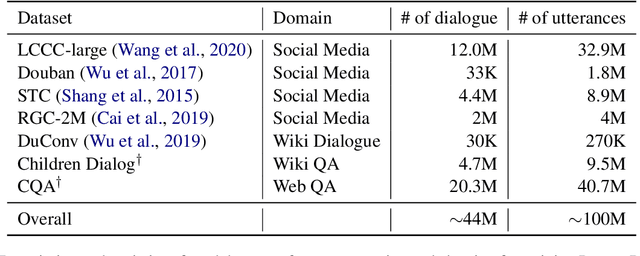
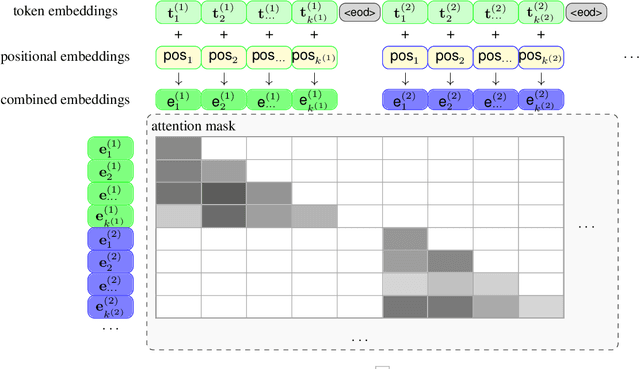
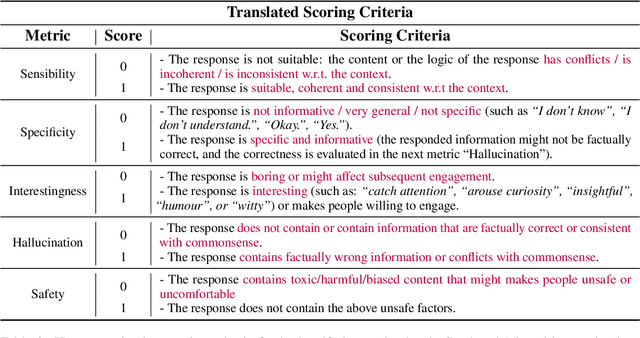
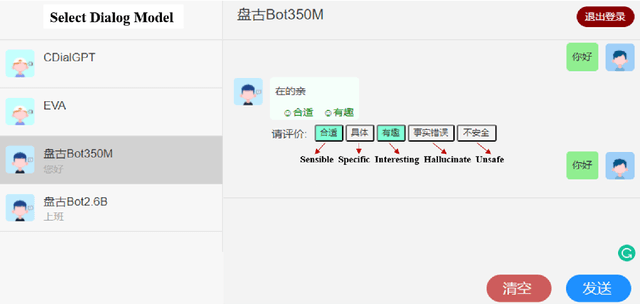
Abstract:In this paper, we introduce PanGu-Bot, a Chinese pre-trained open-domain dialogue generation model based on a large pre-trained language model (PLM) PANGU-alpha (Zeng et al.,2021). Different from other pre-trained dialogue models trained over a massive amount of dialogue data from scratch, we aim to build a powerful dialogue model with relatively fewer data and computation costs by inheriting valuable language capabilities and knowledge from PLMs. To this end, we train PanGu-Bot from the large PLM PANGU-alpha, which has been proven well-performed on a variety of Chinese natural language tasks. We investigate different aspects of responses generated by PanGu-Bot, including response quality, knowledge, and safety. We show that PanGu-Bot outperforms state-of-the-art Chinese dialogue systems (CDIALGPT (Wang et al., 2020), EVA (Zhou et al., 2021)) w.r.t. the above three aspects. We also demonstrate that PanGu-Bot can be easily deployed to generate emotional responses without further training. Throughout our empirical analysis, we also point out that the PanGu-Bot response quality, knowledge correctness, and safety are still far from perfect, and further explorations are indispensable to building reliable and smart dialogue systems. Our model and code will be available at https://github.com/huawei-noah/Pretrained-Language-Model/tree/master/PanGu-Bot soon.
Spatial-Temporal Deep Intention Destination Networks for Online Travel Planning
Aug 09, 2021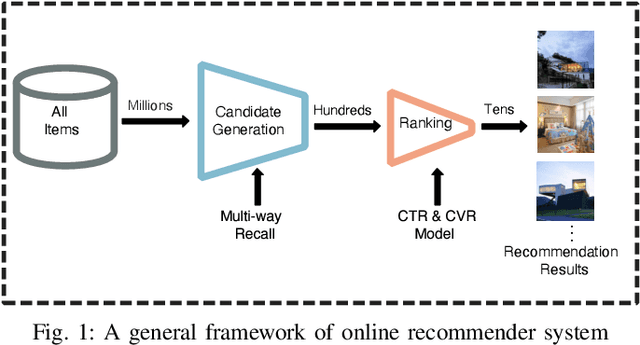
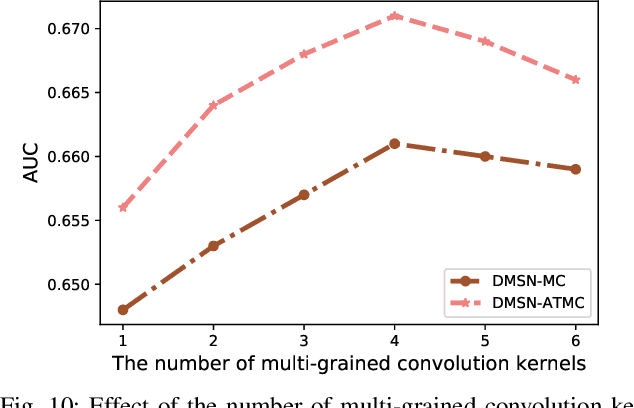

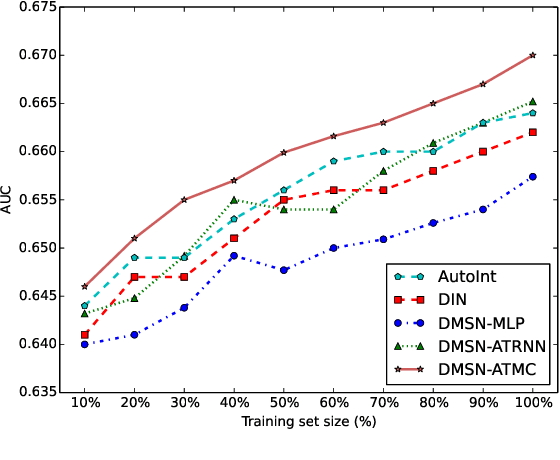
Abstract:Nowadays, artificial neural networks are widely used for users' online travel planning. Personalized travel planning has many real applications and is affected by various factors, such as transportation type, intention destination estimation, budget limit and crowdness prediction. Among those factors, users' intention destination prediction is an essential task in online travel platforms. The reason is that, the user may be interested in the travel plan only when the plan matches his real intention destination. Therefore, in this paper, we focus on predicting users' intention destinations in online travel platforms. In detail, we act as online travel platforms (such as Fliggy and Airbnb) to recommend travel plans for users, and the plan consists of various vacation items including hotel package, scenic packages and so on. Predicting the actual intention destination in travel planning is challenging. Firstly, users' intention destination is highly related to their travel status (e.g., planning for a trip or finishing a trip). Secondly, users' actions (e.g. clicking, searching) over different product types (e.g. train tickets, visa application) have different indications in destination prediction. Thirdly, users may mostly visit the travel platforms just before public holidays, and thus user behaviors in online travel platforms are more sparse, low-frequency and long-period. Therefore, we propose a Deep Multi-Sequences fused neural Networks (DMSN) to predict intention destinations from fused multi-behavior sequences. Real datasets are used to evaluate the performance of our proposed DMSN models. Experimental results indicate that the proposed DMSN models can achieve high intention destination prediction accuracy.
Itinerary-aware Personalized Deep Matching at Fliggy
Aug 05, 2021
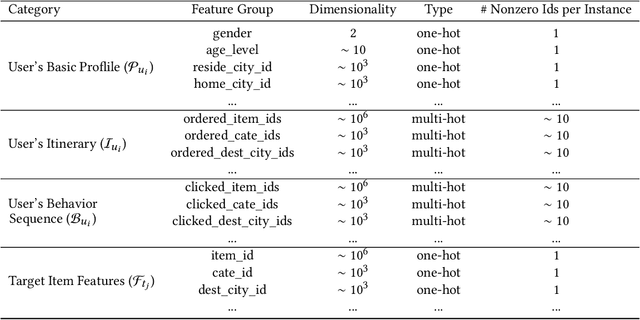
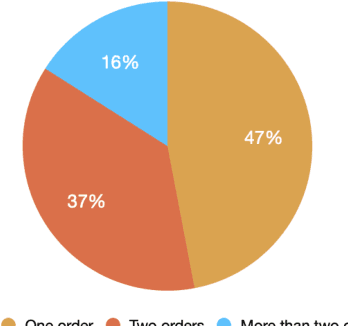
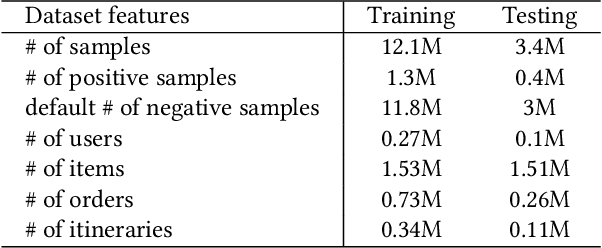
Abstract:Matching items for a user from a travel item pool of large cardinality have been the most important technology for increasing the business at Fliggy, one of the most popular online travel platforms (OTPs) in China. There are three major challenges facing OTPs: sparsity, diversity, and implicitness. In this paper, we present a novel Fliggy ITinerary-aware deep matching NETwork (FitNET) to address these three challenges. FitNET is designed based on the popular deep matching network, which has been successfully employed in many industrial recommendation systems, due to its effectiveness. The concept itinerary is firstly proposed under the context of recommendation systems for OTPs, which is defined as the list of unconsumed orders of a user. All orders in a user itinerary are learned as a whole, based on which the implicit travel intention of each user can be more accurately inferred. To alleviate the sparsity problem, users' profiles are incorporated into FitNET. Meanwhile, a series of itinerary-aware attention mechanisms that capture the vital interactions between user's itinerary and other input categories are carefully designed. These mechanisms are very helpful in inferring a user's travel intention or preference, and handling the diversity in a user's need. Further, two training objectives, i.e., prediction accuracy of user's travel intention and prediction accuracy of user's click behavior, are utilized by FitNET, so that these two objectives can be optimized simultaneously. An offline experiment on Fliggy production dataset with over 0.27 million users and 1.55 million travel items, and an online A/B test both show that FitNET effectively learns users' travel intentions, preferences, and diverse needs, based on their itineraries and gains superior performance compared with state-of-the-art methods. FitNET now has been successfully deployed at Fliggy, serving major online traffic.
 Add to Chrome
Add to Chrome Add to Firefox
Add to Firefox Add to Edge
Add to Edge